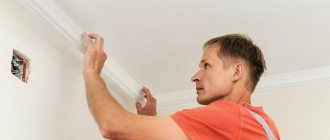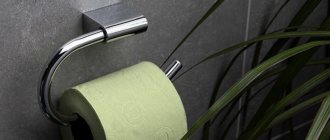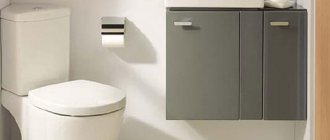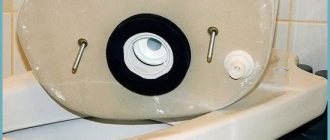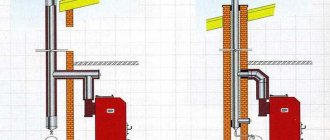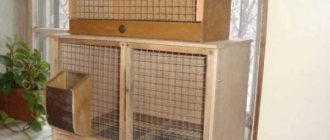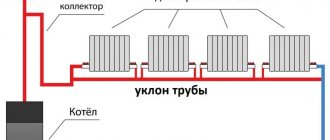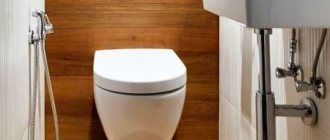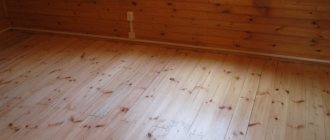The use of beacons is required to perfectly level the plaster mortar on the wall and create even corners. Such guides help to significantly save expensive mixtures. Beacons for plaster are made in factories from different materials, as well as by craftsmen directly at the place of repair. To get the best result in plastering walls, it is important to delve into all the nuances that are associated with the use of beacons.
Wall marking
To correctly install beacons for plaster, it is necessary to make preliminary markings of the walls.
Important! the distance between the beacons when installed on the wall = the length of the rule you will work with, minus 20-30 cm. That is with a rule length of 2 meters, guide profiles are placed every 1.7 m. This is necessary so that when leveling the plaster, you can guide the rule left and right, constantly relying on the profile.
Accordingly, you can calculate the consumption of beacons on the wall: (length of the wall / length of the rule) + 1.
The walls are marked in several steps:
- Draw strictly vertical lines from floor to ceiling using a level. They must be performed at the beginning and at the end of the wall. It is important to leave 15 cm from the floor and 30 cm from the corners.
- Measure the distance between these lines, divide it by the distance between the beacons (see above). The resulting number will indicate the required number of profiles. It is important that the beacons should be 30 cm shorter than the ceiling height.
- Draw vertical lines along the entire wall.
- Dowels are screwed in at the beginning, end and middle of each line. Their caps are aligned exactly vertically using a plumb line or level (bubble/laser). It is important to align the dowels on all lines in the same plane. The beacons will rest on their caps when installed on the wall.
An example of marking using a plumb line, dowels and threads
What is a plaster beacon
The lighthouse is a long strip located on top of the wall. Its upper edge specifies the location of the auxiliary plane - the future surface of the leveled wall.
That is, the beacon is an auxiliary element that makes it easier for the plasterer to process and level the surface of the walls of buildings and structures. The design, size and material of beacons vary, but their purpose is the same.
The benefits that are obtained by using beacons for plaster:
- obtaining impeccable surface geometry of a layer of rough plaster, which is otherwise impossible to obtain;
- reducing the time of leveling plastering;
- good quality of leveling by people with little plastering experience or those who do not have such experience;
- reducing the consumption of plaster materials for leveling walls.
Is it necessary to remove the guide profiles?
Experts recommend removing non-galvanized metal beacons so that they do not rust in the plaster. You can do this in the following way:
- After applying the plaster, after a couple of hours, mark the location of the beacons with a pencil.
- Dry the walls thoroughly.
- Using a hard spatula, separate the beginning of the beacon.
- Use pliers to remove the beacon, gradually bending it away from the wall.
- Cover the resulting holes with mortar, leveling with a spatula.
- Leave the plaster until completely dry.
Remove the beacons and cover the grooves with solution
Plastic beacons can be removed and left in the wall.
Types and sizes
Many home craftsmen who are starting to plaster walls for the first time do not know what kind of beacons there are in terms of type and parameters, and which ones are best to buy. Their main difference lies in the materials from which they are made.
Metal
They are the most popular among builders because they are convenient and quick to work with. The profile length can be easily adjusted using ordinary scissors. You can purchase a metal plaster beacon at any hardware store.
Guides are available in sizes 3, 6 and 10 mm. The appropriate option is selected depending on the unevenness of the wall or ceiling. The greater the curvature of the surface, the wider the profile used.
A metal beacon for plaster has the following advantages:
- low cost;
- easy installation;
- quick setting of the solution, which allows you not to stop work.
Metal guides are characterized not only on the positive side. For example, it is quite common to find finished products with curved geometry due to irregularities in the production process, during transportation or storage. In order not to run into defects, it is recommended to carefully check each guide before purchasing and transport them correctly to their destination.
Another common flaw with metal beacons is the possible formation of rust spots on the surface. They appear after the destruction and oxidation of zinc located on the surface of the guides. After applying the plaster, it is better to remove them immediately.
Aluminum beacons have a fairly flexible structure. To provide them with additional rigidity, you need to first fill the surface with a solution, and then install the guides.
Plastic
This type of beacon is very similar to metal, but heavy-duty plastic is used for their manufacture. The result is parts with less weight and greater strength. It's much easier to work with them.
Plastic beacons are resistant to deformation, their original geometry is well preserved even in conditions of improper transportation. After using the profile, spots and stripes do not appear on surfaces.
Such plaster beacons cannot be installed in places with negative temperatures, as they can crack from frost. It is not recommended to impact them with heavy weight and strong impacts, because the impact resistance of plastic guides is very low.
Improper fastening of the beacon profiles entails their sagging during the process of leveling the plaster, which will ultimately provide unevenness to the coating.
Reusable steel
These guides are expensive because they can be used more than once. Basically, they are used by builders who use beacons constantly.
Reusable steel profiles have increased strength, so there is no need to thoroughly fix them. Galvanized beacons will not bend or lose their original appearance, and the result of plastering the walls will be positive in any case.
Despite the fact that these beacons are convenient to use, they have their drawbacks. Not every person can afford to purchase a reusable steel profile for minor repairs; the high price forces them to choose a different type of beacon.
It is better to remove the steel product before the solution has completely hardened. Otherwise, despite the strength of the profiles, they can be broken.
Homemade
When special guides are not at hand, various devices are used instead. Some use metal pipes or corners. Wooden slats also work very well, but are used less frequently due to their tendency to warp.
Craftsmen often select profiles for drywall as homemade beacons, but then more solution is wasted than in other options.
In construction stores you can easily pick up ready-made beacons for plaster for any repair. However, homemade products are still often used. The process of making them is completely simple, and the costs are minimal.
Strings
Installing string beacons is considered the simplest and cheapest option for using guides for the rule. For placement you will need screws, thread or wire, as well as a drill. First, holes are made for the dowels, then the screws are screwed in, and the thread is tensioned. It is at the level with it that the solution is subsequently applied.
The layer of solution is laid slightly thicker than the surface itself. Next, after the plaster has slightly hardened, the top ball is cut off using a thread. The surface is leveled according to the obtained reference point.
Using string beacons does not come without some drawbacks. If the screws are attached incorrectly, the threads will be tied unevenly, which will then certainly affect the curvature of the walls or ceiling.
The advantages of this method include the low cost of string guides, because wire and thread cost pennies, and almost every home craftsman has self-tapping screws.
By brand
Using this type of plaster beacon is great for one-time repairs. The costs are minimal and installation is very simple.
First, vertical lines are drawn, in which holes are drilled every 40-50 centimeters. After which the screws are screwed in at the same level. Then a slightly larger amount of solution is applied, and the rule is pressed against the screws to remove excess. As soon as the plaster is thoroughly dry, the surface is leveled using a spatula.
Lighthouses by brand have some disadvantages. If the screws are set unevenly, the plane will end up with noticeable deformation. In addition, the work should be carried out very carefully, otherwise the pronounced curvature of the wall and ceiling surface will subsequently be evident.
You can plaster the walls yourself. An important condition is to obtain all the necessary materials and equipment, as well as follow the technology. Beacons should always be removed, regardless of the materials from which they are made. This measure will provide excellent results for a long time.
Useful video
Below we have selected several videos with master classes on installing beacons and plastering walls.
Quick installation using a laser level.
The next video shows the technology for plastering walls using beacons with your own hands. Leveling is carried out with gypsum mortar on brick without mesh reinforcement.
We hope that the article was useful to you. Ask questions and share your experience in the comments.
Previous
Tool Angle for plaster: types and installation rules
Next
Tools Construction floats: types and features
How to choose
The choice of beacons should be approached responsibly. If we take into account what the profiles were made of, then the plastic variety is used in cases where it is planned that the beacons must be removed after plastering or their operation will be carried out in very comfortable temperatures with no sudden changes.
Steel beacons are quite reliable, because they cannot be affected at all by temperature, humidity, chemicals and fungi. When using these guides, it is not at all necessary to remove them, both from the inside and outside of the building.
If craftsmen choose beacons by size (3 - 30 mm), then they need to buy profiles that correspond to the curvature of the walls. The thickness of the plaster layer is applied in such a way that the top one is sanded well, without reaching the guides. The length of the product ranges from 2 to 6 meters. Small ones are used for ordinary repair work in residential areas, and large ones are purchased for plastering warehouses and production workshops.
Lighthouses also differ in their shape. The T-shaped plaster beacon profile is placed in the corners of the rooms, the V-shaped one is placed on the entire wall and ceiling surface. A corner beacon is indispensable in the process of arranging a window, when there are few fastenings and materials that are strong enough are required. Metal guides are more promising in such situations; they better protect corners from damage, cracks and other types of negative impacts.
The use of homemade beacons is advisable if special profiles from the manufacturer are not available or there is not enough finance to purchase them. The simplest option in such cases is to pull the strings onto self-tapping screws. Instead, it is possible to install a wire, and then use it to remove the surface layer of the solution to ensure perfect evenness.
Surface preparation
Before installing beacons, the surface must be prepared, regardless of what walls are planned to be plastered - brick, foam or gas block, plasterboard, concrete or others. The foundation preparation process consists of several stages, each of which is very important. You can't miss a single one.
The first step is to remove the old covering from the wall, and we are talking not only about wallpaper, but also about plaster, paint or something else
Please note the specificity of the procedure. So, the wallpaper will have to be removed in any case, just like water-based paint
If the walls are covered with oil paint (it is almost impossible to remove), then you can leave the paint, after making notches to improve the adhesion of the plaster and the oil composition. Old plaster can also be preserved if it does not fall off or “bounce”, but if there is even the slightest concern, it is better to dismantle the coating
It is extremely important to take the time and thoroughly clean the surface of the base
Next, the wall is washed from dust and dirt, and particles of the remaining old coating are removed. The surface should be clean and slightly rough.
The walls are well primed using a deep penetration liquid primer
Please note that priming work is carried out 2-3 times. Each time you need to wait until the previous layer of primer has completely dried
Depending on the type of surface, before installing beacons and plastering, you may need to apply a certain material to the wall. So, for brick walls no additional processing is required. Concrete surfaces must be treated with liquid cement mortar. Wooden and metal walls are additionally reinforced with special plaster nets, which are secured between the beacons.
In principle, at this point the preparatory work can be considered completed. Before starting any repair work, you need to protect adjacent objects and surfaces with masking tape: cover the door jambs, stick a strip of tape on the floor and on the ceiling where they are adjacent to the walls. This will completely protect the environment and will not require much time in the future to clean adjacent surfaces.
conclusions
- Beacons are necessary elements in order to make the wall smooth, without bulges or irregularities;
- Most often, beacons made of plastic and stainless steel are used in repair work. The latter are more in demand, since they do not need to be removed after the alignment procedure;
- V-shaped elements are used for corners, T-shaped ones are intermediate beacons;
- You need to select several mounting points for one beacon so that it fits tightly to the wall;
- Beacons are attached to the wall with a mixture of cement, sand and alabaster, or using regular drywall adhesive.
